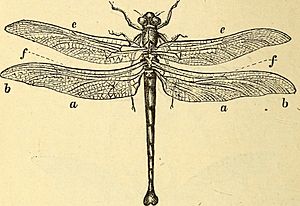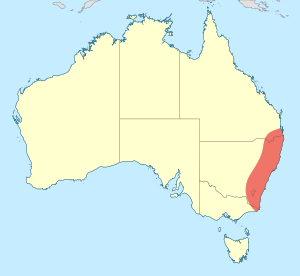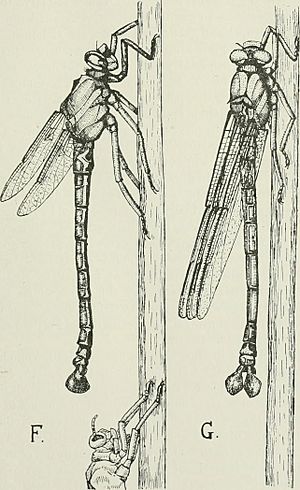Giant dragonfly facts for kids
Quick facts for kids Giant dragonfly |
|
|---|---|
 |
|
| Scientific classification | |
 |
The Giant Dragonfly, also known as the south-eastern petaltail, is one of the largest dragonflies on Earth! These amazing insects are known for their impressive size and unique habits. They belong to a special group of dragonflies called Petalura gigantea.
Contents
Meet the Giant Dragonfly
Imagine a dragonfly with a wingspan almost as wide as your hand! The Giant Dragonfly is truly huge.
- Male Giant Dragonflies usually have a body that is 6 to 7.5 centimeters long. Their wings can spread out to about 11 centimeters wide.
- Female Giant Dragonflies are even bigger! Their bodies can be 8 to 9.5 centimeters long, and their wings can stretch up to 12.5 centimeters across. That's a really big insect!
Where Do They Live?
You can find the Giant Dragonfly along the eastern coast of NSW in Australia. They live from the border with Victoria all the way up to northern NSW. They are not found west of the Great Dividing Range, which is a large mountain range.
Some specific places where they have been seen include:
- The Blue Mountains
- The Southern Highlands
- Areas around the Clarence River
- Certain coastal swamps from north of Grafton down to Nadgee in the south
Amazing Life Cycle
Most dragonflies spend their early lives, called the larval stage, completely in water. But the Giant Dragonfly is special! Its larvae (young dragonflies) spend most of their time on land, living in burrows near swamps or wet areas. This is quite unusual for a dragonfly.
After growing and changing, the larva goes through its final stages of metamorphosis to become the adult dragonfly we see flying around. This transformation is a truly amazing part of their life cycle.
Protecting the Giant Dragonfly
Sadly, the Giant Dragonfly is considered an endangered species. This means there are not many of them left, and they are at risk of disappearing forever. Because of this, they are protected under the NSW Threatened Species Conservation Act. Efforts are being made to help protect their habitats and ensure these magnificent insects can continue to thrive.
Gallery




